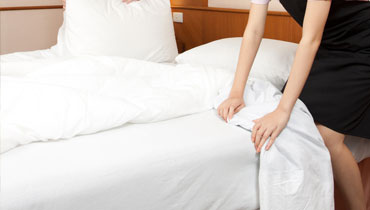CARING FOR YOUR ANTIQUE LINENS
 If you discover, inherit or buy antique linens, you will eventually need to launder them. I hope that the following tips will contribute to your ability to use and enjoy your items. I love laundering antique linens and I hope that you will come to love it, too! Or, at the very least, you will not worry so much about it.
If you discover, inherit or buy antique linens, you will eventually need to launder them. I hope that the following tips will contribute to your ability to use and enjoy your items. I love laundering antique linens and I hope that you will come to love it, too! Or, at the very least, you will not worry so much about it.
Old textiles are usually very sturdy and most are far more colorfast than some of the dyes we have today. (though sometimes not.) They were intended to last an entire lifetime, and often were passed down for the next generation to use. When linens are stored, they invariably develop “age” or “storage stains” which has nothing to do with whether they were put away clean.
PLEASE NOTE THAT I DO NOT GUARANTEE ANY METHOD THAT YOU CHOOSE TO TRY.
Some items already suffer from dry rot, mouse nibbles and destructive rust. You will not be able to save these things if the fibers are already compromised. If you tug on two sides of a handkerchief, towel or pillowcase and it comes apart without much effort, your item has dry rot and has reached the end of its useful life. It may have looked pretty good, but it was already damaged. Throw it away, mourn it, move on. Sometimes, you must let go.
TO START, BUY SUPPLIES:
Gallon of White Vinegar
Rust Remover
Restoration
Bleach pen
Laundry detergent (simple soap, nothing added)
Order “RESTORATION” and its even-more-gentle companion, “Quilt Wash” from the manufacturer, Engleside Products of Lancaster, PA. www.englesideproducts.com
Oxyclean is similar, more widely available and slightly less expensive, but it is not as good; I prefer Restoration and I know it is worth the extra time and trouble to buy it.
“Restoration” and white vinegar are my preferred products. In August of 2007, I acquired and laundered priceless napkins that came from the King of Italy. If I fearlessly treated these fabulous heirlooms with “Restoration,” you can only imagine my trust in this product. Read the label and use common sense. You may only need to use “Restoration” for your initial laundering to remove horrible storage grime but it is so effective that you may reach for it more often. I add “Restoration” in the washing machine with my family’s laundry, too. It removes odors, age spots, storage stains, label stains and often, but not always, some rust. If it does not remove the rust, I use “Whink Rust & Stain Remover.” Be aware that if rust has already eaten away the fibers that, by dissolving the rust with a rust treatment, you may be left with a hole where the rust had been.
As with most products, I use less than the manufacturer recommends and I repeat the treatment on very stubborn stains or rust. You will be rewarded for your patience.
In the past, I tried almost anything that anyone had ever suggested or that I ever read about on very bad stains on whites. I’ve used (with varying results) automatic dishwasher detergent, white toothpaste, lemon juice with sunshine, stain sticks, sprays and bleach. After all that experimenting, I now use “Restoration” first and, if stains remain after two or three sessions with it, I put the dampened piece outside on the lawn in bright sunshine for a day. This is a magical solution; often horrible stains will disappear within an hour. The magical part is that I have been off doing something else! If the item comes back inside and the stains persist, I may resort to using bleach with laundry detergent. I like to have a bleach pen on hand because it allows me to pinpoint where I apply the bleach. After using bleach, always rinse with white vinegar, then rinse again with clear water.
